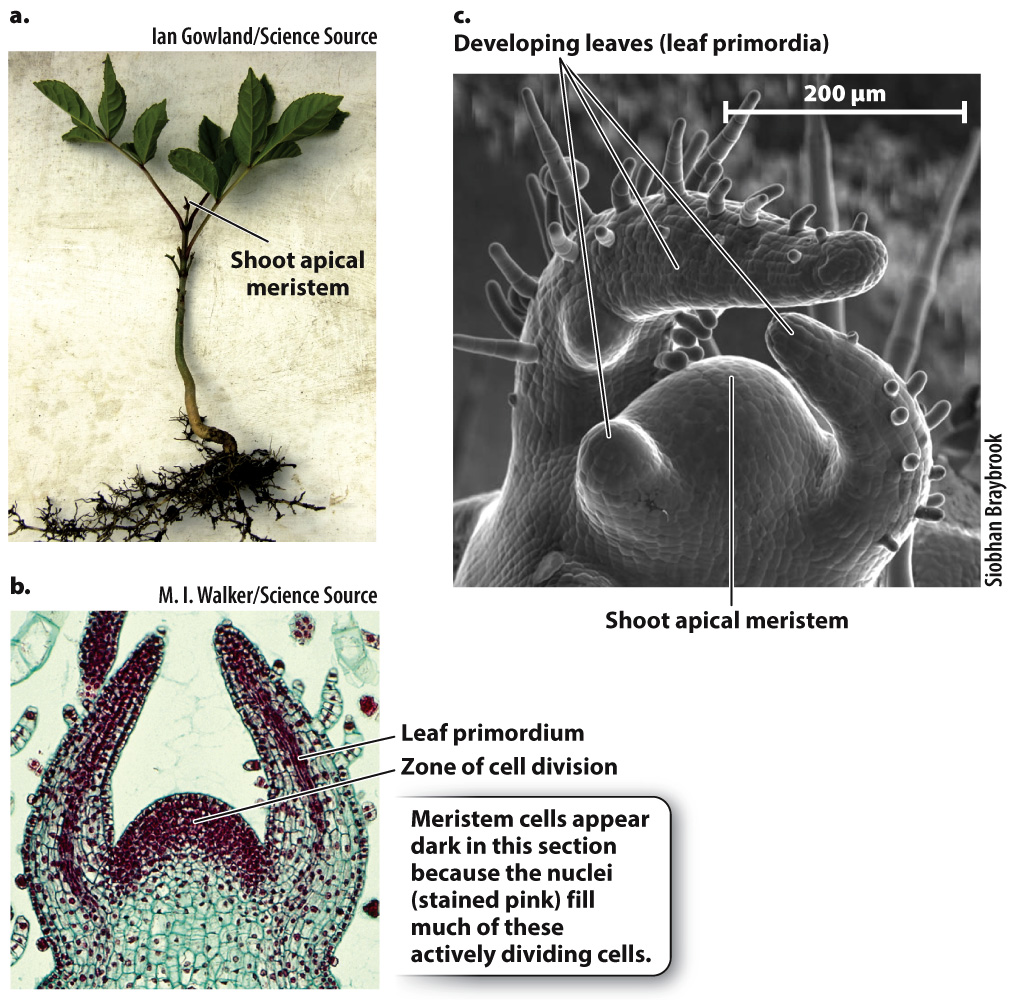Stems grow by adding new cells at their tips.
At the tip of each stem lies a tiny dome of cells called the shoot apical meristem (Fig. 31.2). The shoot apical meristem is a group of totipotent cells that, like embryonic stem cells in animals, gives rise to new tissues. As we will see, plants have meristems in several parts of their bodies, but upward growth occurs exclusively at the shoot tip. This is where cell division occurs, generating all the new cells that serve to elongate stems. The shoot apical meristem also initiates leaves and produces new meristems, which allow plants to branch.

An important characteristic of the shoot meristem is that it maintains a constant size even though it is a region of active cell division. As new cells are added near the shoot tip, cells that are farther from the shoot tip cease to divide. Cells near the shoot tip maintain their ability to divide by the expression of meristem identity genes. The expression of meristem identity genes is controlled by a network of chemical signals produced by cells at the very tip of the stem. Because these signals can be transmitted only over a limited distance, only the cells close to the shoot tip express meristem identity genes.
Quick Check 1 What are three functions of the shoot apical meristem?
Quick Check 1 Answer
The shoot apical meristem is the site of cell division and thus is the source of all the cells that make up a stem. It also initiates leaves and produces new meristems, which allow stems to branch.